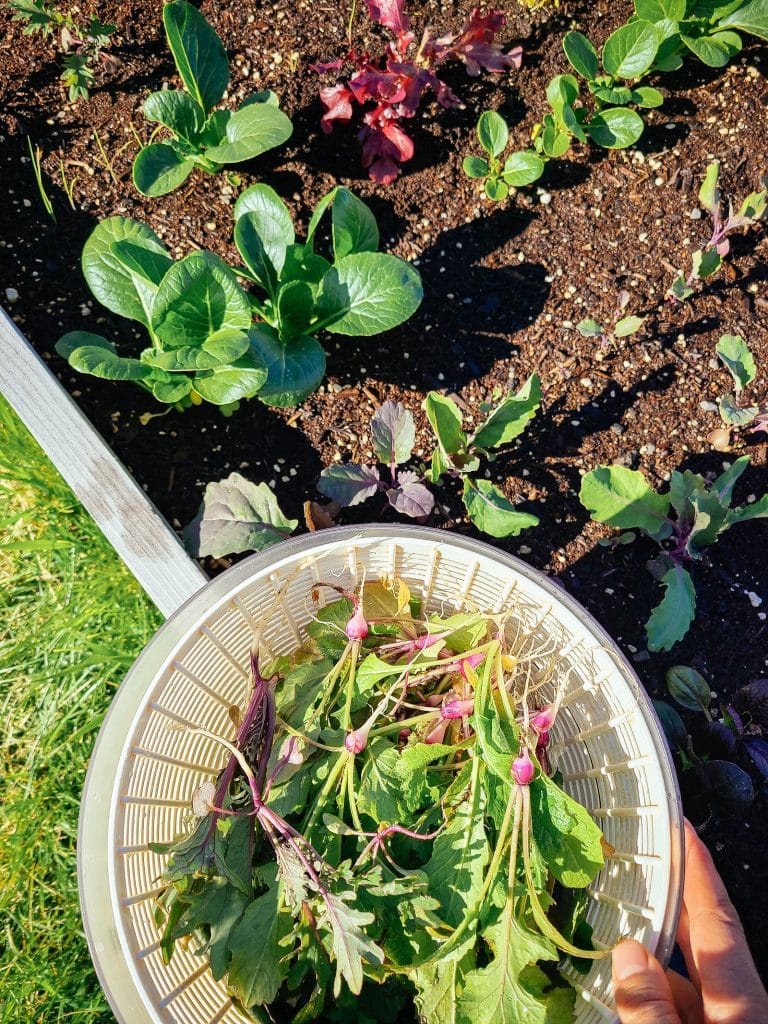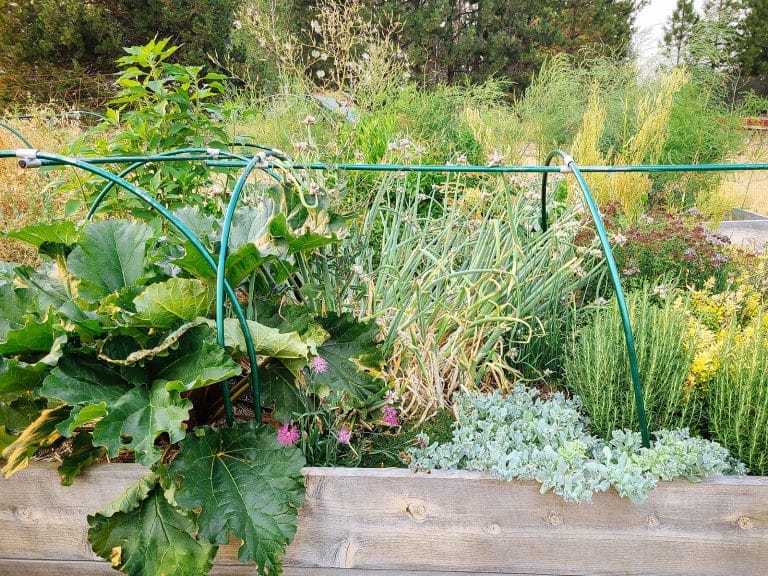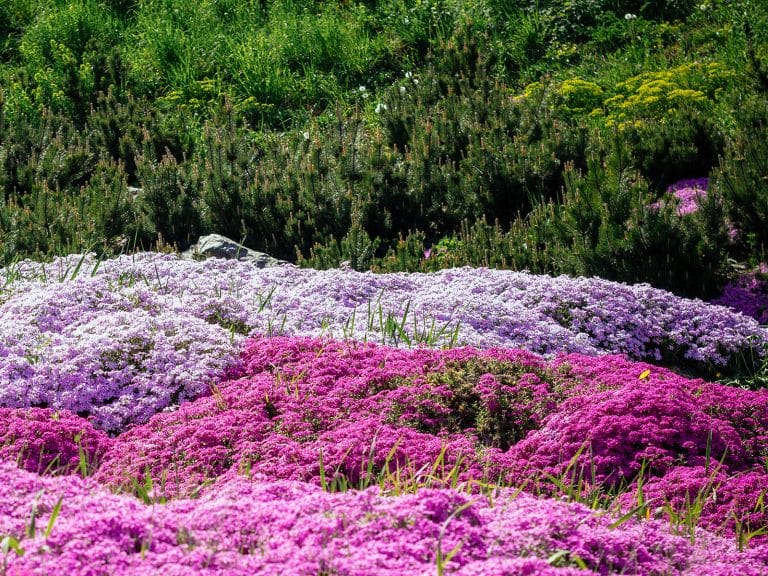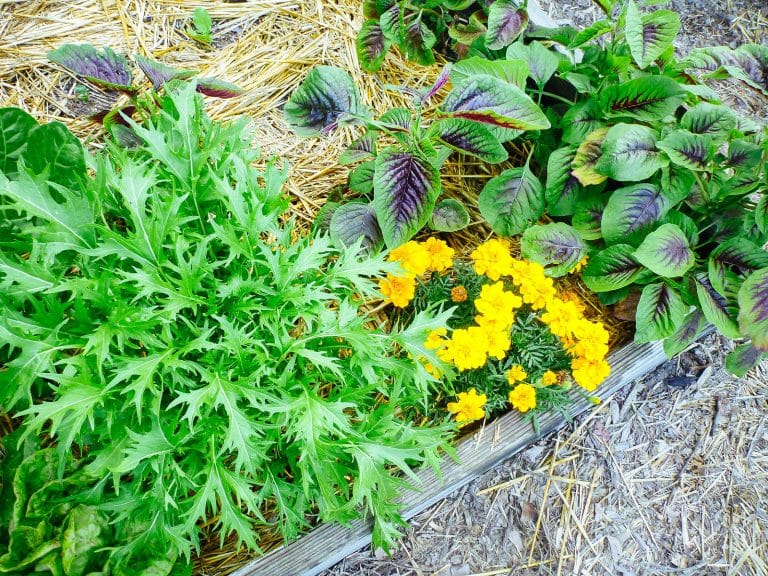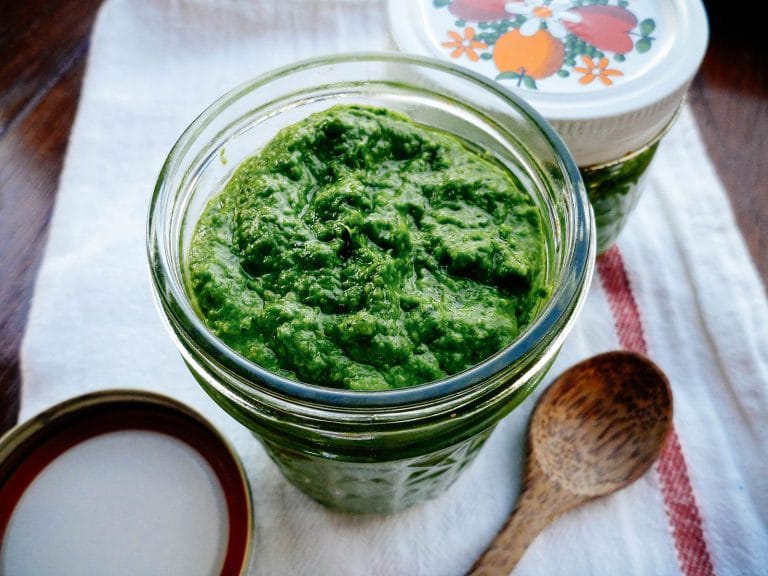She came out of nowhere and took the houseplant world by storm a few years ago: Philodendron ‘Birkin’, an unusual cultivar that looks just as luxurious as her name would suggest.
Below, let’s have a look at everything you need to know to keep this stripey beauty happy and healthy in your home.
| Common name(s) | Philodendron ‘Birkin’, Philodendron ‘White Wave’ |
| Scientific name | Philodendron ‘Birkin’ |
| Family | Araceae |
| Height and spread | Up to 3 feet high and 1 foot wide |
| Light | Bright indirect |
| Soil type | Aroid soil |
| Water | Keep lightly moist |
Disclosure: If you shop from my article or make a purchase through one of my links, I may receive commissions on some of the products I recommend.

About Philodendron ‘Birkin’
Description
As far as Philodendron varieties go, there are plenty of superstars to choose from: elegant ‘Brandi’, rosy ‘Pink Princess’, the velvety ‘Black Gold’, the fabulous Philodendron gloriosum with its huge leaves, all sorts of spectacularly variegated cultivars… and then there’s Philodendron ‘Birkin’, one of the most stunning of them all in my opinion.
No wonder they named it after the famous Hermès bags, the cheapest of which sells for around $10,000. Luckily for us, the plant is a bit more affordable than the purse!
A cultivar apparently resulting from a spontaneous mutation discovered in a batch of Philodendron ‘Rojo Congo’ houseplants, ‘Birkin’ (sometimes referred to as ‘White Wave’) is shaped like a typical Philodendron. It has cordate (heart-shaped) leaves that are quite small on young plants but grow larger with age.
Its growth pattern is typical for a climbing plant, with strong air roots that allow it to cling onto a vertical surface in search of more light.
This being said, you’re unlikely to confuse ‘Birkin’ with any other Philodendron, as it’s easy to recognize by its patterned foliage. The leaves, which have a dark green base color, feature thin silvery to cream-colored veins. New ones come out almost white, gradually darkening as they mature.
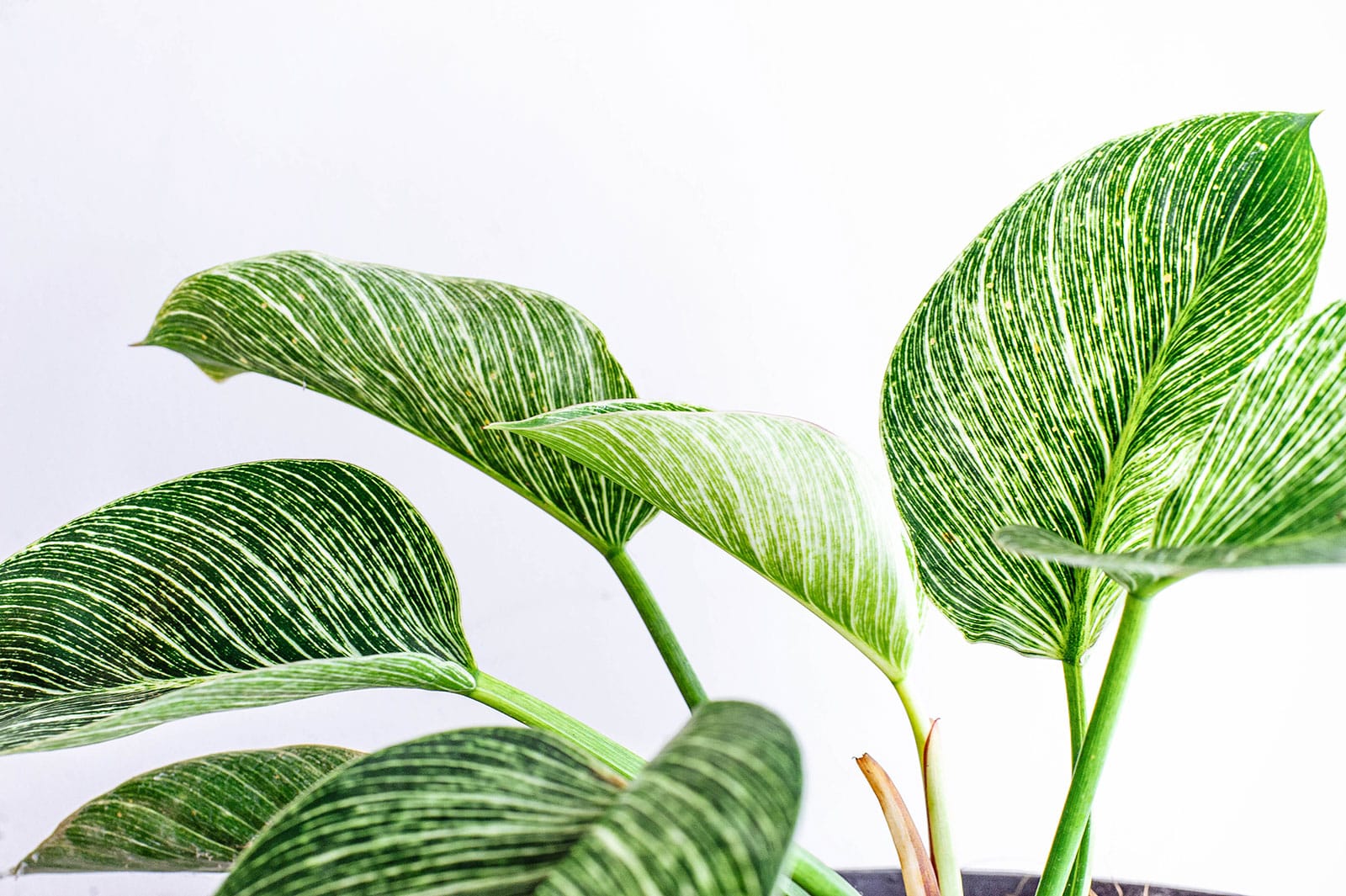
Where to buy Philodendron Birkin plants:
Philodendron ‘Birkin’ reverting?
It has to be mentioned that, as with many other variegated plants, the pattern on Philodendron ‘Birkin’ isn’t entirely stable. I’ve had my Birkins partially revert, which results in leaves that have patches of stripes as well as fully green parts. You may also find yours throwing foliage that’s partially brownish-red in color, probably a remnant of its reddish parent plant.
Whether these funky leaves bother you or not is a matter of preference. I think it’s kind of cool, and I suppose a lot of houseplant enthusiasts agree, as they’ve even come up with a name for it: Philodendron ‘Birkin Black Cherry’.
If you’re not a fan, you’re best off pruning any partially reverted leaves to hopefully coax your plant back into producing regular ones.
Did you know? If you want a really fancy plant, a pink Philodendron ‘Birkin’ has also been popping up in the “plant-o-sphere.” Its new leaves emerge looking a rosy pastel rather than cream. Swoon!
Natural habitat
As mentioned above, Philodendron ‘Birkin’ is a cultivar. This means it was developed by humans, in this case through the propagation of a spontaneous mutation in order to produce plants with the same characteristics.
What this means is that, technically speaking, this houseplant doesn’t have a natural habitat. Even its parent plant, ‘Rojo Congo’, doesn’t exist in the wild, as it’s a man-made hybrid of two other Philodendrons. One of the parents was Philodendron tatei, which can be found in rainforests in much of northern South America.
The other parent for ‘Rojo Congo’ (that is, the grandparent of Birkin) was Philodendron ‘Imperial Red’. Yes, another cultivar!
Unfortunately, we can’t trace things back any further than this, because although it’s known that ‘Imperial Red’ was also the result of a spontaneous mutation, I can’t find information on which species this mutation occurred in.
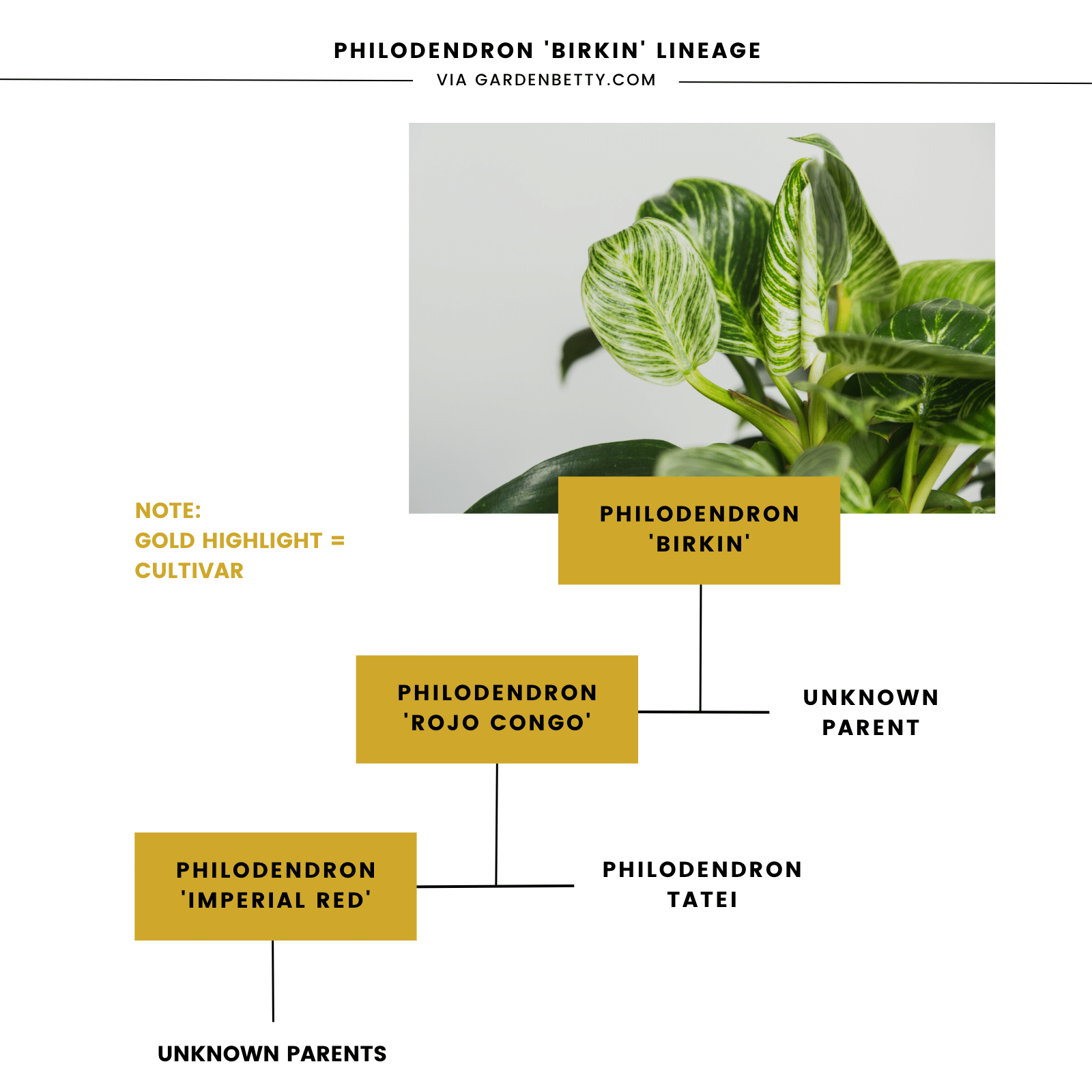
In any case, we do know that all Philodendrons are naturally found in tropical habitats in the Americas and surrounding islands. As long as you treat your ‘Birkin’ like a rainforest plant, you should be in the clear.
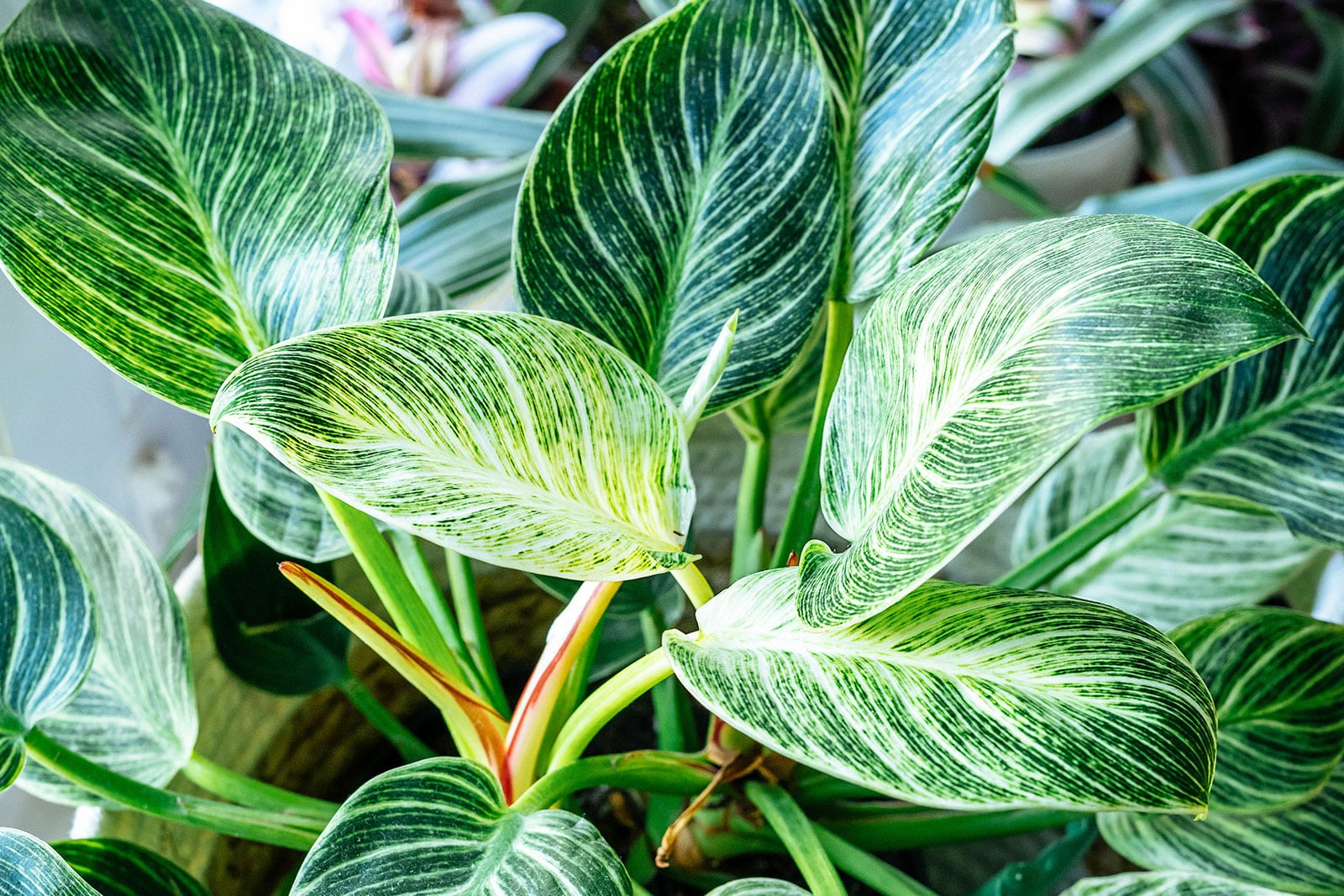
Caring for Philodendron ‘Birkin’
Light and temperature
If you’d like to grow a Philodendron ‘Birkin’ in your home, one of the most important factors is light. Your plant needs a bright environment or its beautiful variegation will fade, but it won’t respond well to being blasted with direct sun.
That means your ‘Birkin’ is best off on a windowsill that receives bright but indirect light (anywhere but south-facing, in most cases). Artificial lighting should also work well. Be sure to always acclimate houseplants gradually if you’re moving them to a higher-light spot, or their leaves can burn!
As for temperature, remember that Philodendrons are tropicals that appreciate a toasty environment. Room temperature and above should work well for yours. A bit lower shouldn’t be an issue either, but they begin to struggle around 50°F. Frost will kill them instantly.
Water and humidity
Given the fact that most Philodendrons naturally occur in what is referred to as the “wet tropical biome,” it shouldn’t come as a surprise that your ‘Birkin’ loves plenty of moisture. Still, it’s important not to overdo it, because soggy soil can lead to root rot even in these water lovers.
During the warm and bright summer months, your plant should hopefully be growing well, producing new leaves every few weeks. It’ll appreciate regular waterings during this time; you can water when the first two inches of the soil have dried out. This may be as often as every other day in hot climates.
In winter, houseplants tend to go partially or completely dormant. They need less water during these darker months, so you can water your Philodendron ‘Birkin’ when the soil has gone about halfway dry. In cool climates, you may end up watering less than once a week in winter.
Rainforest houseplants like this one appreciate high air moisture levels. The ideal would be 90 percent or up, but that’s rarely realistic unless you keep your ‘Birkin’ in a terrarium. Try to keep the humidity level at least 50 percent or more, though. You may want to consider running a humidifier if it regularly drops below this.
Soil and planting
Climbing plants like this Philodendron don’t tend to rely too much on their earthly tether, instead using their host trees for support. They’re not used to growing in dense soil, and their roots are sensitive to rot if proper drainage isn’t provided.
In the home, it’s therefore a good idea to provide yours with a nice and airy soil mixture that allows excess water to drain quickly.
This preference for a lighter soil type is something that many members of the family Araceae (the Aroids) have in common. You can buy pre-mixed Aroid soil in specialty nurseries or plant shops, which should be perfect for your Philodendron ‘Birkin’.
If you prefer mixing your own Aroid soil (store-bought ones tend to be quite pricey), that’s also easy enough. You’d need to buy a few different components, but as I said, the resulting soil mix can be used for a whole bunch of different houseplants.
Everyone’s got their own preferences, but a basic Aroid soil could consist of:
- 1 part potting soil
- 1 part perlite
- 1 part fine orchid bark
- 1 part sphagnum moss
If you tend to underwater, you can add some more moss to help ensure the soil doesn’t dry out too quickly. If you’re more of an overwaterer, you can increase the percentage of perlite or bark, which will help promote drainage.
As for a planter for your Philodendron ‘Birkin’, it doesn’t matter much what it looks like as long as it has a drainage hole in the bottom. There should also ideally be space for a moss pole or plant totem. Although these plants can keep themselves upright when they’re small, they begin to fall over as they mature if you don’t provide support.
Letting yours climb will result in better growth, and it gives a more natural look as well.

Recommended products for Philodendron Birkin plant care:
- Good Earth Organics Premium Potting Soil
- Perfect Plants Organic Perlite
- Better-Gro Orchid Bark
- Better-Gro Orchid Moss
- Totem Monkey Extendable Coir Moss Poles
Fertilizing
One thing you need to know about Philodendron ‘Birkin’ is that it’s definitely not among the quickest-growing Philos. This is not unusual: Variegated plants have less chlorophyll, so they can’t photosynthesize quite as efficiently as their fully green cousins.
What this means is that a ‘Birkin’ doesn’t need large amounts of fertilizer. If yours is chugging along nicely during the spring and summer growing season, however, you can apply some diluted liquid houseplant fertilizer every month or so.
Don’t use plant food during the winter dormancy period or if your Philodendron isn’t doing well. Its roots won’t be able to process the nutrients, and can actually be damaged by them instead.
Recommended fertilizers for Philodendron Birkin:
- Elm Dirt Plant Juice Organic Fertilizer
- Houseplant Resource Center Liquid Fertilizer for Houseplants
- Instant Biologics Instant Plant Food (Fizzing Nutrient Tablets)
Pruning
Generally speaking, tropical houseplants like this one don’t require much in the way of pruning. Lower leaves will naturally die off once the plant doesn’t need them anymore, and they can be removed once they’ve gone crispy.
One situation in which you may want to prune a Philodendron ‘Birkin’ is if it appears to be losing its stripes and you’re not a fan of the resulting look. Cutting the stem to the last unreverted leaf can sometimes help to stimulate plants to begin producing their normal variegated foliage again.
As you’ll see in the section below on propagation, you can easily use any top cuttings you remove from your ‘Birkin’ to grow a whole new specimen.
Dividing or repotting
Although a happy and healthy Philodendron ‘Birkin’ will produce the occasional offshoot, it usually doesn’t tend to be the best candidate for division. That leaves us with repotting, which can be done every other year (although yearly is also fine if yours is a particularly quick grower).
Repot during springtime, going one pot size up if need be. Provide some fresh soil and water a little more sparingly for a few weeks.

Propagating Philodendron ‘Birkin’
Did you know that the only way to produce a new Philodendron ‘Birkin’ is through asexual means—that is, propagation? If you attempted to grow one from seed, it wouldn’t look like the parent plant at all. This is because it won’t have that same genetic mutation that causes the pretty striped pattern.
Plant nurseries produce these Phildendrons en masse by means of tissue culture. This technique permits them to grow entire plants from just a few cells. If only we had that option in our homes! Still, at least we’ve got regular propagation at our disposal, and it works almost as well.
If you’d like to multiply your ‘Birkin’, you can do so by taking cuttings. The easiest is a top cutting: You behead your plant and coax the head into growing roots. The headless mother plant will re-sprout from a different growth point, meaning you now have two.
Here’s how you do it:
- Use sharp and clean shears to take one or multiple cuttings. They should be at least around 3 inches long and have a leaf or two each.
- Water method: Place the cuttings in a glass of water and set them in a light location. They should root in a few weeks, after which you can transfer them to a pot with normal Aroid soil.
- Soil method: Place the cuttings directly in a pot with Aroid soil. Set them in a light and ideally warm and humid location. You’ll know they’ve rooted when new leaves begin to appear.
- If you’re using the soil method, you can apply some rooting powder to the cutting before planting it. It will help speed up the process.
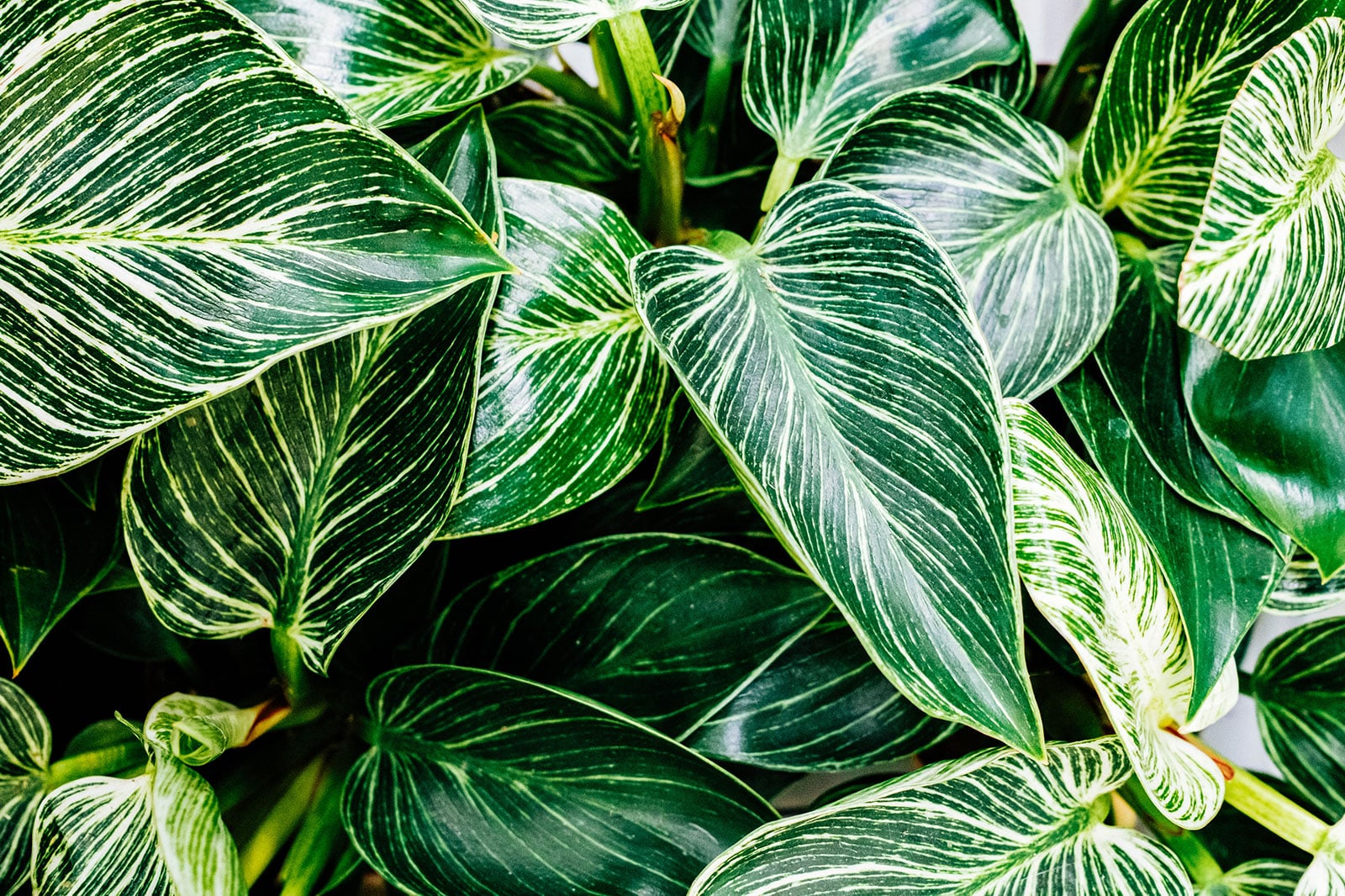
Common questions about Philodendron ‘Birkin’ care
Is Philodendron ‘Birkin’ toxic to cats and dogs?
Members of the family Araceae, including the entire genus Philodendron, are considered mildly toxic. Their sap contains microscopic calcium oxalate crystals, which won’t poison your pet if it takes a bite but which can cause irritation and swelling in the mouth and throat.
Just keep your plant away from your furry friend if you want to prevent any incidents!
Why is my Philodendron ‘Birkin’ getting yellow leaves?
There can be various reasons, but the most common is watering issues. Is it possible the soil is soggy or stays damp for too long? Or alternatively, have you forgotten to increase watering frequency in summer?
Remember that it’s also normal for plants to eventually shed their lower leaves. As long as this doesn’t happen at an alarming rate, it’s nothing to worry about.
https://powo.science.kew.org/taxon/urn:lsid:ipni.org:names:193193-2
Arndt, M. C., Gile, I. R., & Beerman, S. J. (2023). Molecular Studies to Evaluate Variegation of Philodendron var. Birkin-Are Genetic Mutations Responsible for Variegation in Philodendron Birkin?.



